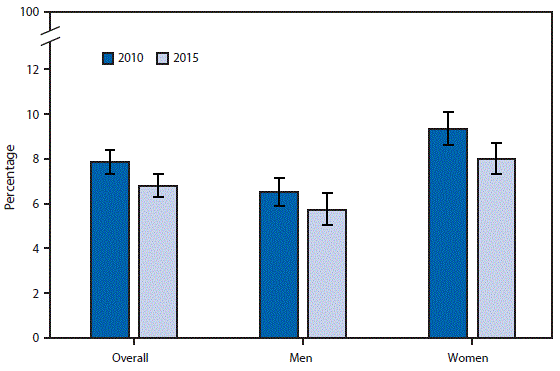One of the most positive developments in American culture over the last few years is the increased awareness of bullying in school. Though I was a geek in high school (and proudly remain one today), I mostly hung out with other geeks, so bullying wasn't much of a problem for me*.
But that's not the case for a large number of American kids. According to the CDC, 20% of high school students report being bullied on school property; 16% report being bullied electronically.
One would think that bullying would stop after high school. One would also think that adults are more mature and considerate once they are in the workplace. But, one would be wrong.
A new CDC report shows the self-reported prevalence of threats, bullying, and harassment among adults (aged 18 and over) in the workplace:

As shown, in 2015, 7% of Americans (roughly 6% of men and 8% of women) report being bullied in the workplace. That's a slight improvement from 2010, and it's certainly much lower than the 20% figure reported from high school students. Still, there's much room for improvement.
The study is limited by the fact it is self-reported. Obviously, how one person defines bullying may be different than how another person defines it. If a boss tells you to get off your lazy rear end and get to work, is that tough love or bullying?
Fortunately, unlike in school, workplace bullying has real consequences: Employers can terminate employees who harass others. Additionally, HR (human resources) departments exist to handle such issues. Employees, especially women, should be encouraged to make full use of them.
*Note: Besides, if somebody needed help with a math or chemistry problem, bullying a geek isn't a wise move; I could "solve for x" with the best of them.
Source: "Percentage of Adult Workers Aged ≥18 Years Who Reported Being Threatened, Bullied, or Harassed While on the Job, by Sex — National Health Interview Survey, United States, 2010 and 2015." MMWR 66(16): 429. Published: 28-Apr-2017. DOI: 10.15585/mmwr.mm6616a8.

